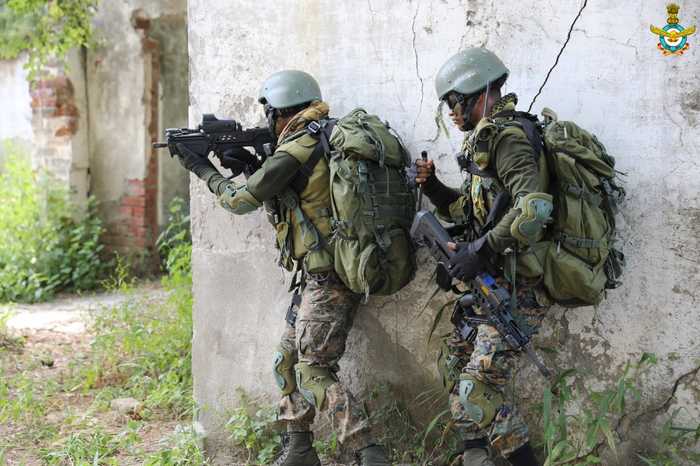Published 15:19 IST, May 19th 2024
The Garud Commando Force, established in 2004, now has over 1,500 personnel, enhancing the Indian Air Force's operational capabilities.
Advertisement
Uttar Pradesh: The Garud Regimental Training Centre (GRTC) at Air Force Station Chandinagar in Uttar Pradesh hosted a significant event on Saturday, the Maroon Beret Ceremonial Parade, to celebrate the successful completion of training for the Air Force Special Forces, the Garud Commandos. Air Marshal PK Vohra, Senior Air Staff Officer of the Western Air Command, served as the Reviewing Officer for the parade, a position underscoring the importance of the occasion.
In his address, Air Marshal Vohra extended his congratulations to the newly minted Garud Commandos, emphasizing the critical importance of rigorous training and the continuous honing of Special Forces skills to meet the ever-evolving security landscape. The Garud Commando Force, a specialized unit of the Indian Air Force established in February 2004, now boasts a strength of over 1,500 personnel. Named after Garuda, a revered deity in Hindu mythology, this elite force plays a pivotal role in enhancing the operational capabilities of the Indian Air Force (IAF).
Advertisement
CZZR-1716112017126.webp)
The Reviewing Officer ceremoniously presented the Maroon Beret, Garud Proficiency Badge, and Special Forces Tabs to the successful trainees. Trophies were also awarded to meritorious trainees, with the best all-rounder trophy being presented to Flight Lieutenant Shashwat Rana, in recognition of his outstanding performance during training.
The parade featured impressive demonstrations by the Garud Commandos, showcasing their combat readiness through displays of combat firing skills, hostage rescue operations, firing drills, assault explosives, obstacle crossing drills, wall climbing, slithering, rappelling, and military martial arts. These demonstrations highlighted the culmination of an extremely demanding training regimen, preparing the trainees for the diverse and challenging operational tasks they will undertake as part of the elite Garud force.
Advertisement
Genesis and Evolution of the Garud Commando Force
The inception of the Garud Commando Force can be traced back to the aftermath of terrorist attacks on major air bases in Jammu and Kashmir in 2001. Recognizing the need for a specialized unit to protect critical Air Force assets and conduct specialized operations, Indian Air Force commanders advocated for the formation of a dedicated commando force. The Garuds were envisaged to perform roles such as Combat Search and Rescue, Reconnaissance, Counter-Insurgency Operations, and responding to terror threats against airfields.

Initial plans, conceived in October 2001, called for a force of 2,000 commandos. Initially named "Tiger Force," it was later renamed "Garud Force." In September 2003, the Government of India authorized the establishment of a 1,080-strong force, trained along the lines of the Army's Para SF and the Navy's MARCOS. The first batch of 100 volunteers began their training at the IAF No.1 Airmen Training Center in Belgaum, Karnataka, and the Garud Commandos were formally unveiled on 6 February 2004, with their public debut during the Air Force Day celebrations in New Delhi on 8 October 2004.
Advertisement
Expanding Capabilities Post-Pathankot Attack
Following the Pathankot Terror Attack, the Indian Air Force decided to expand the Garud Commando Force by raising ten additional squadrons, increasing the total strength to 1,780 personnel. The Garuds' mandates include direct action, special reconnaissance, rescuing downed pilots in hostile territories, establishing and providing air-traffic control at airbases in hostile areas, suppressing enemy air defences, and destroying enemy assets such as radars. Additionally, the Garuds evaluate the outcomes of Indian airstrikes and use laser designators to guide these strikes, playing a crucial role in safeguarding IAF installations and assets, particularly critical ones.
The Maroon Beret Ceremonial Parade thus not only marks the successful transition of trainees into fully-fledged Garud Commandos but also underscores the enduring commitment of the Indian Air Force to maintaining a robust and highly capable Special Forces unit, ready to meet the multifaceted challenges of modern warfare and security.
Advertisement
15:19 IST, May 19th 2024